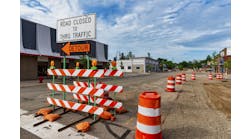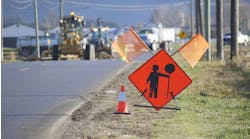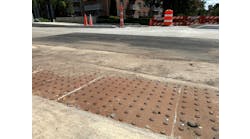With road repair and rehabilitation projects on the rise across the country, reducing traffic delays caused by work zones and improving mobility is more important than ever. It is estimated that work zones account for nearly 24% of nonrecurring motorist delay, with work zones cited as second only to poor traffic flow as a source of traveler dissatisfaction.
To improve work-zone planning, Federal Highway Administration (FHWA) released the QuickZone software in 2002. Since then, the program has been used by state and local highway agencies and construction contractors to compare the traffic affects for work-zone mitigation strategies and to estimate the resulting costs, traffic delays and potential backups. Now the debut of the enhanced QuickZone 2.0 provides highway agencies and others with an even better work-zone planning tool.
As in the first version of the software, QuickZone 2.0 can be used for such applications as exploring the feasibility of completely closing a road for construction; assessing the effect of delay-mitigation strategies, such as deploying variable message signs; identifying maximum and average user delays by time of day and day of week; scheduling work around seasonal traffic demands; and identifying work that could be scheduled during evening hours. QuickZone 2.0 also incorporates new features that users have asked for:
- Improved two-way, one-lane operations modeling, including modeling of flagger operations;
- Enhanced detour modeling, including tracking of increased travel time on long detour routes;
- Improved ability to model more complex projects, including those with multiple work zones; and
- A wider variety of performance measures that users can track, graph and analyze. These include length of total mainline queue, total mainline delay in vehicle hours, total passenger car costs, total travel time in minutes and detour delay costs. The key measures also can be quickly compared against the conditions before construction.
QuickZone has been used for projects in various stages of development on both rural roads and urban highways.
The National Park Service used it, for example, to plan for a major rehabilitation of the main road that runs through Zion National Park in Utah.
A primary concern in the planning was the potential problem for visitors entering the park through the town of Springdale. Traffic queues often occurred at this visitors entrance even under normal conditions.
QuickZone was used to estimate the length of the queue and number of vehicles in the queue during the peak tourist period of June-October.
The analysis indicated that queues reaching into the town of Springdale would likely occur unless changes were made to the proposed traffic control plan. Because of the QuickZone analysis, project engineers have begun to re-evaluate the construction phasing and propose alternative strategies.
The Tennessee Department of Transportation, meanwhile, used the software to evaluate the feasibility of completely closing a section of I-40 east of Knoxville to perform road work. When QuickZone showed that traffic congestion would likely be significant, further analysis was then done of the predicted problems and options for managing the traffic to prevent lengthy delays.
FHWA’s Central Federal Lands Highway Division also used QuickZone to plan for the reconstruction of an 18.6-mile section of the Beartooth Highway in Wyoming. This section had not been rebuilt since the original road construction in 1936.
QuickZone was used to evaluate a series of four planned work-zone areas requiring flaggers, providing an estimate of the cumulative delay a motorist would likely encounter from the series of work zones and allowing for better coordination of lane closures.
QuickZone 2.0 is available for purchase from the McTrans Center (800/226-1013 or 352/392-0378; www.mctrans.ce.ufl.edu) or PCTrans (785/864-2599; www.kutc.ku.edu/cgiwrap/kutc.pctrans/index.php). Users of Version 1.0 will receive a free upgrade.


